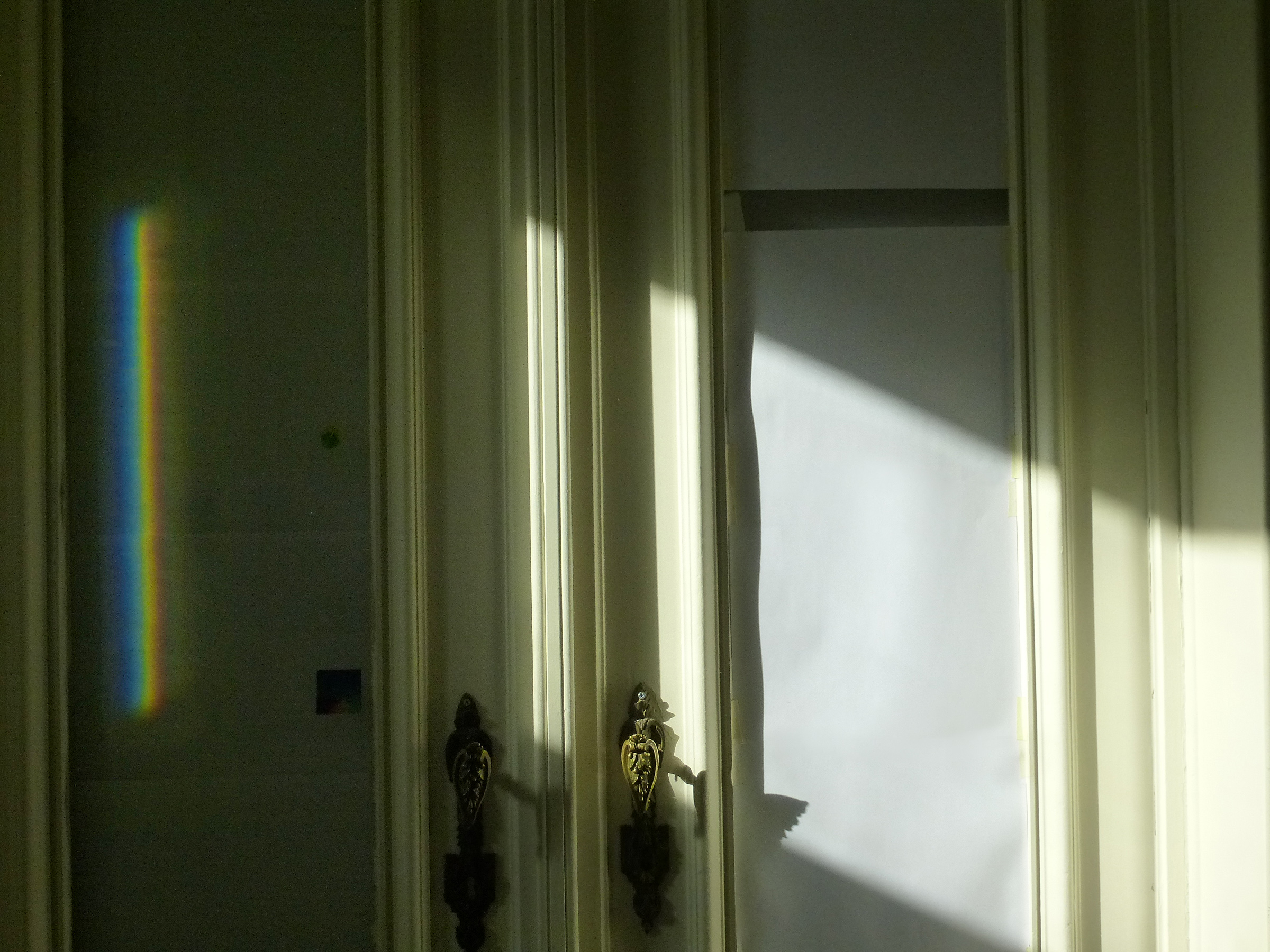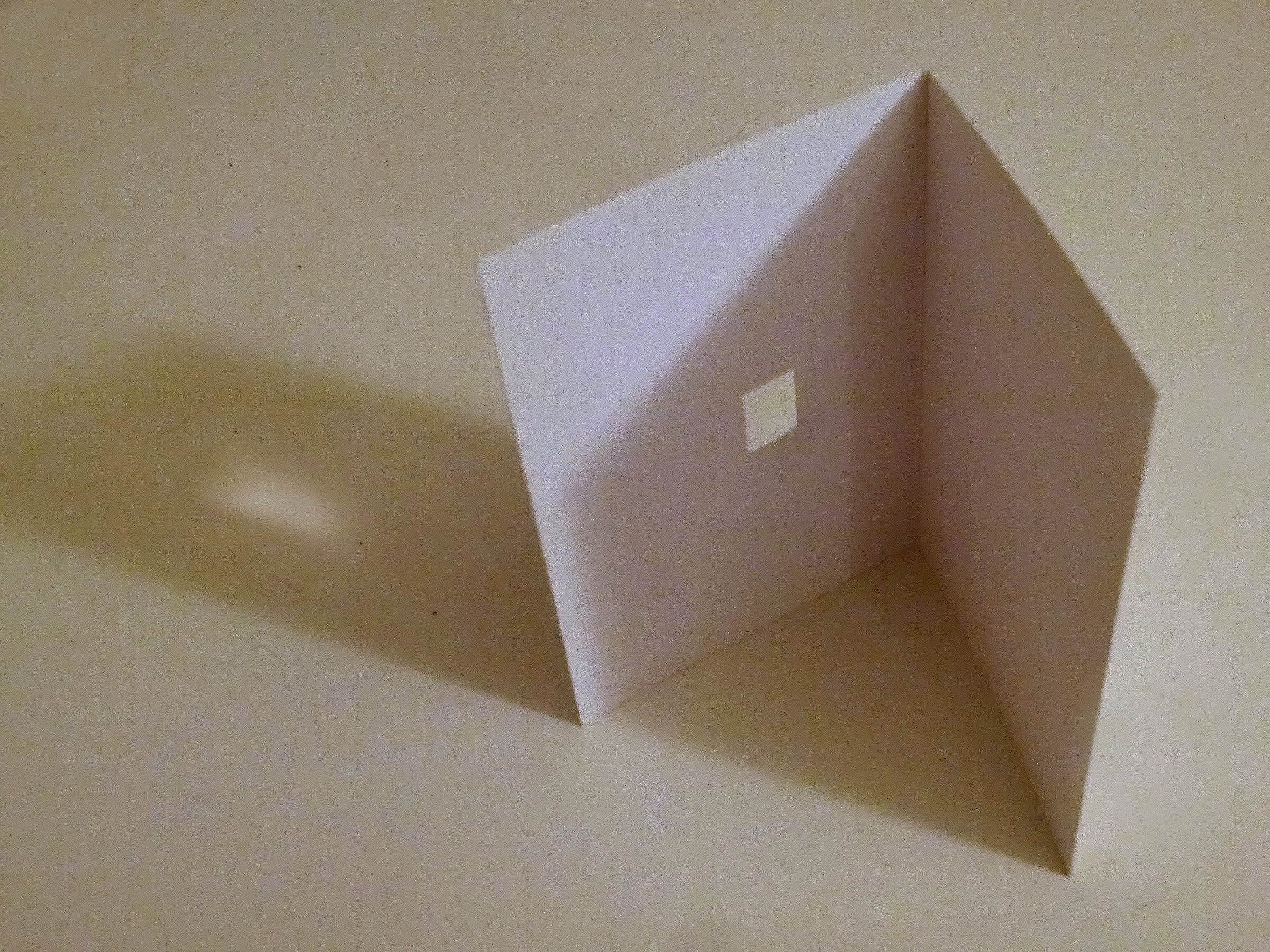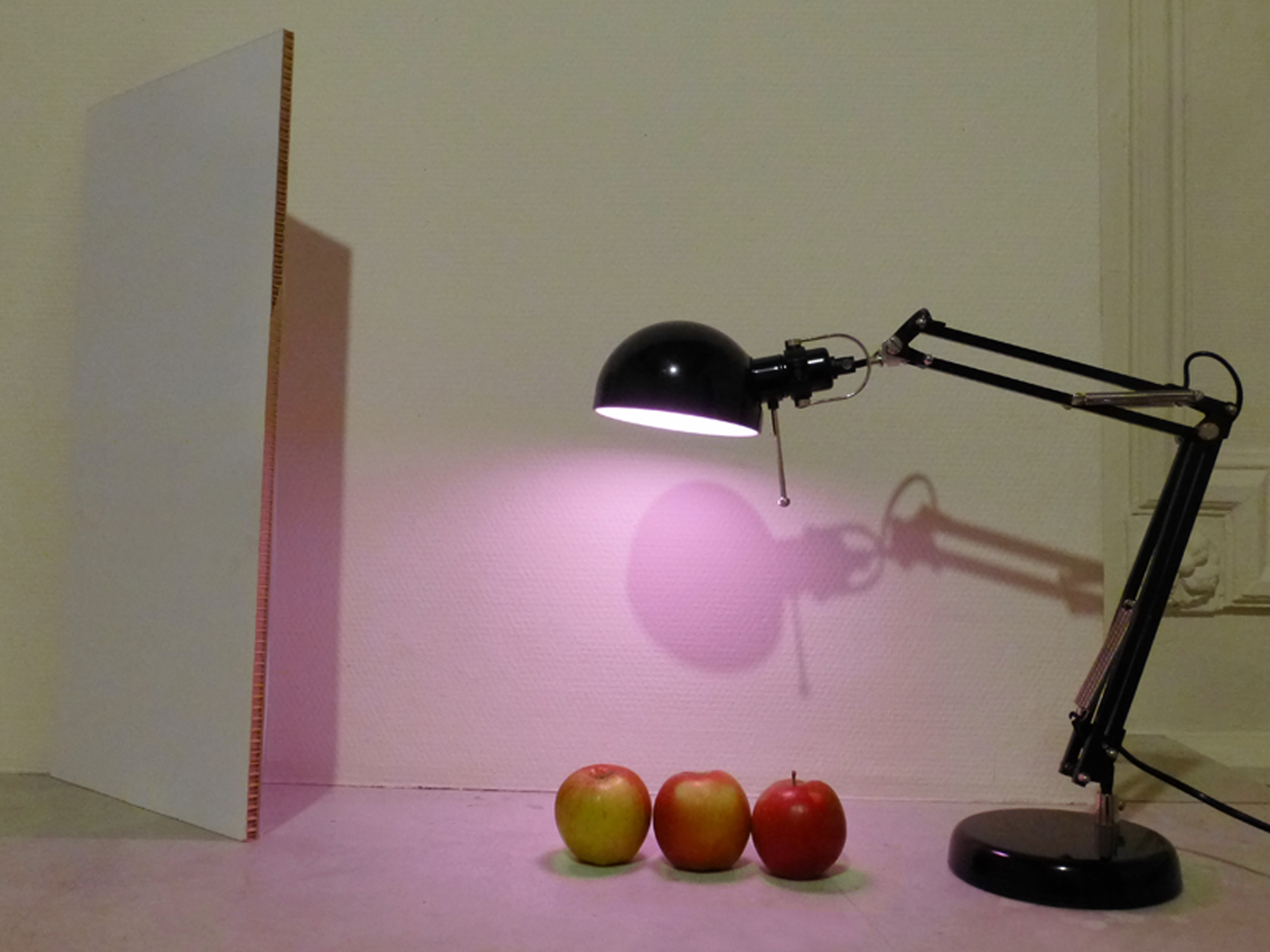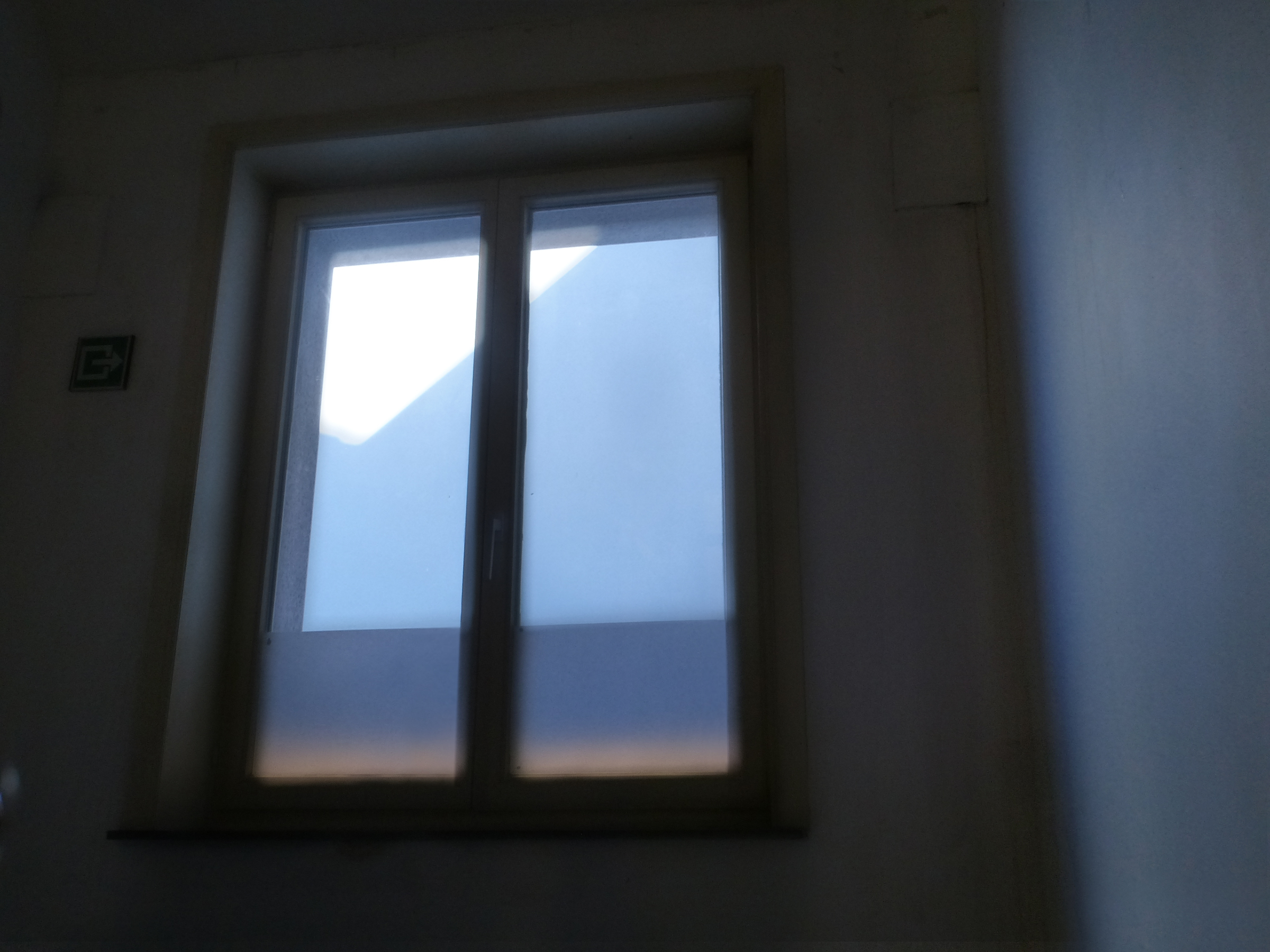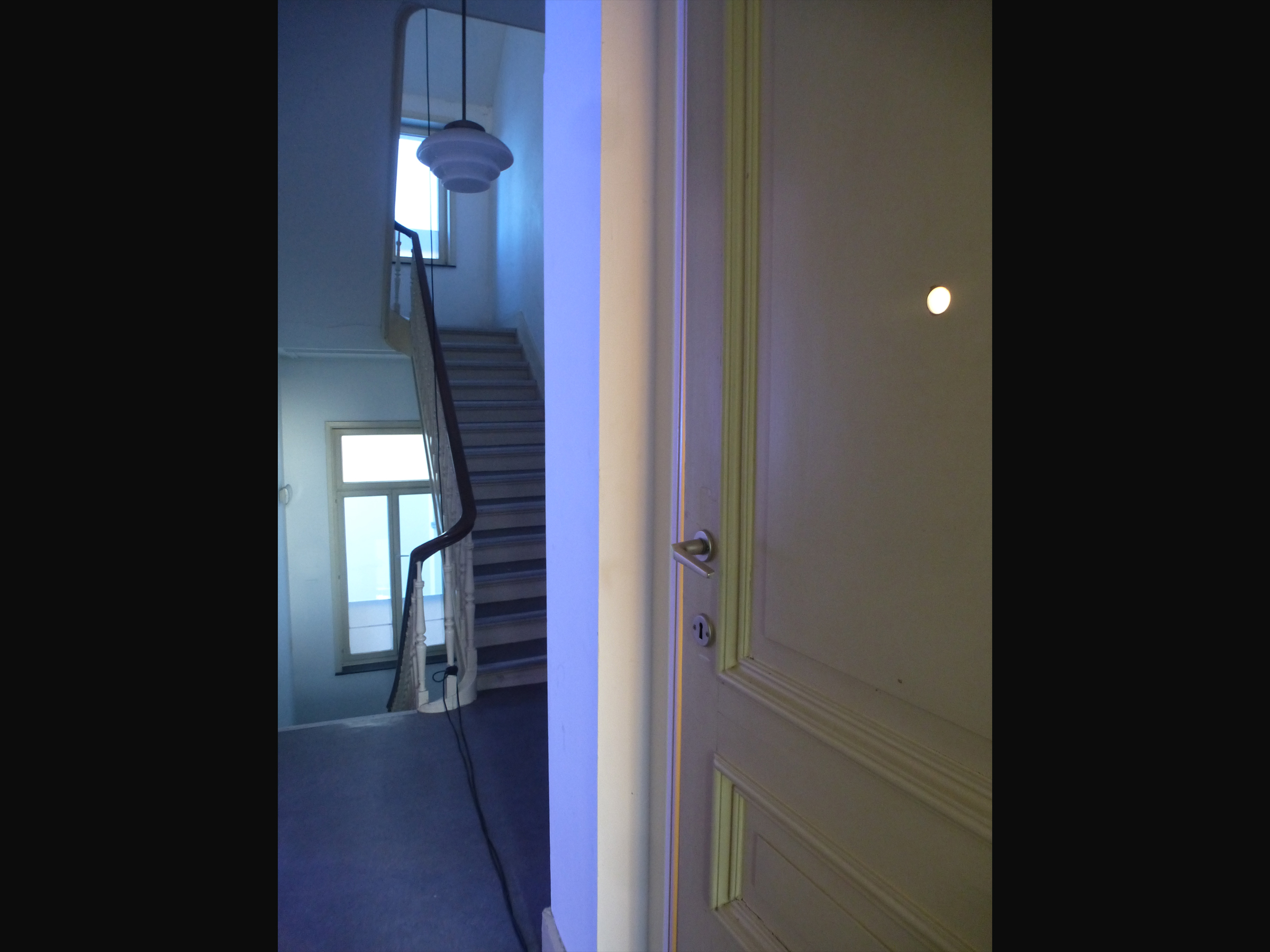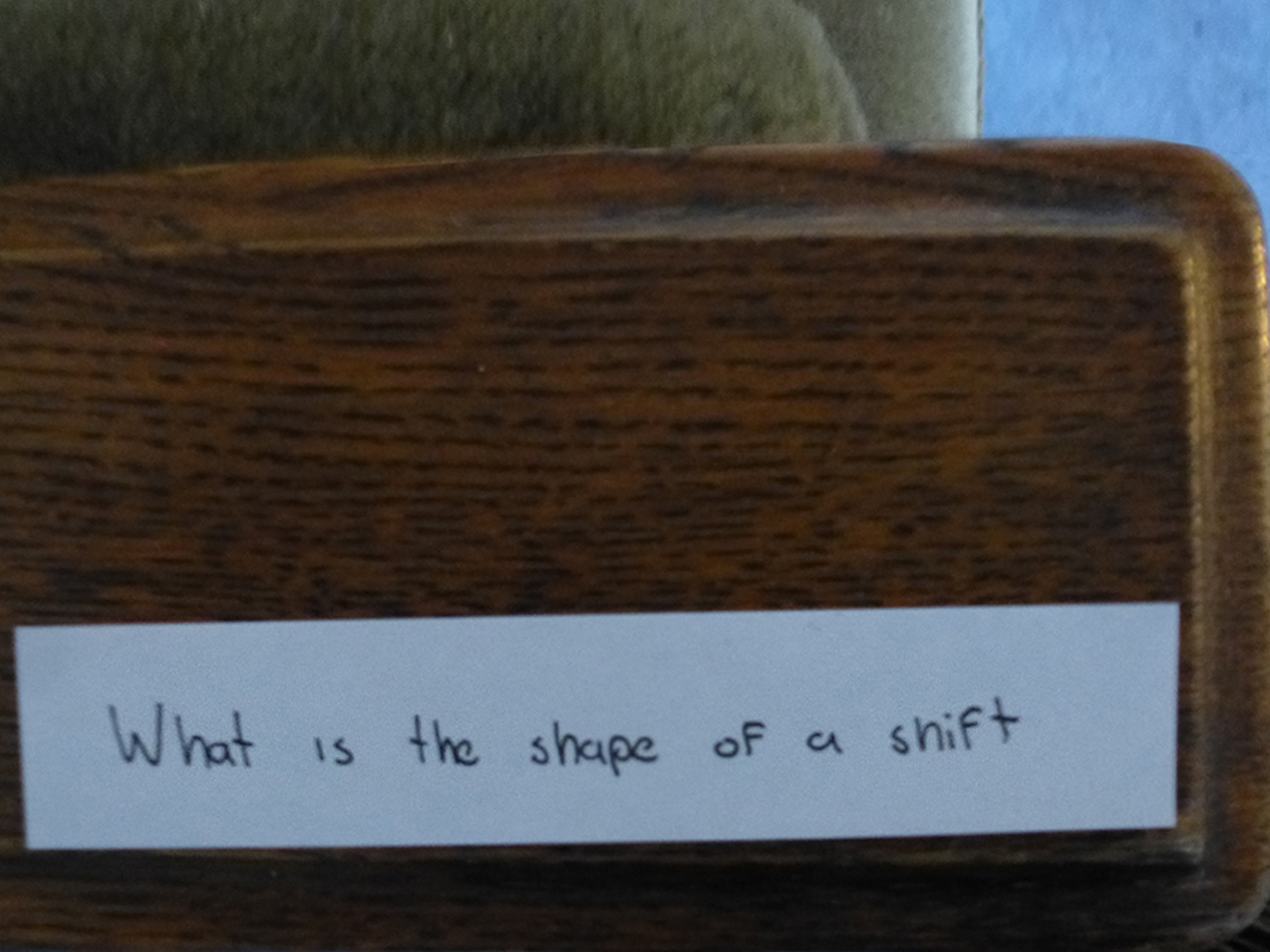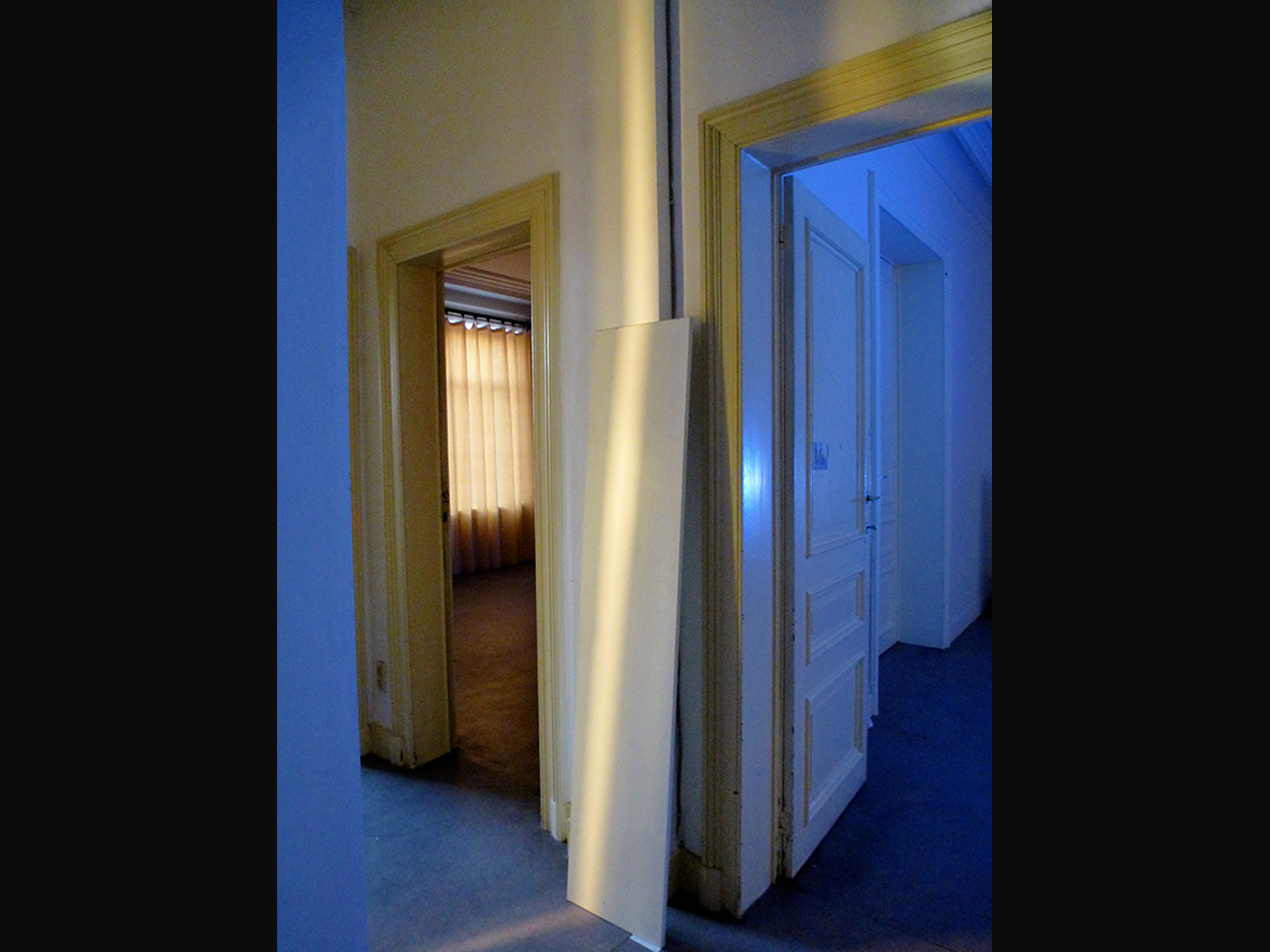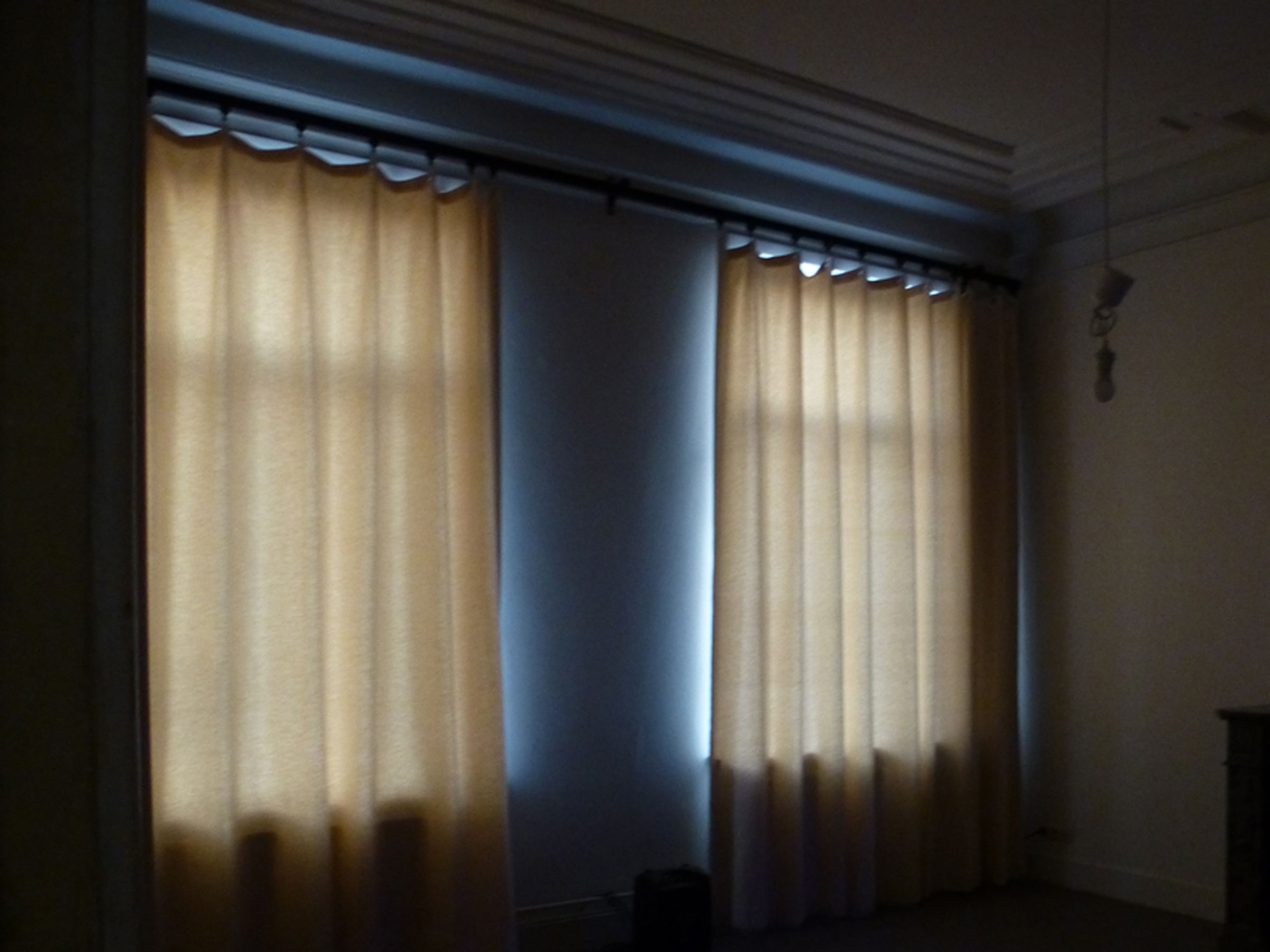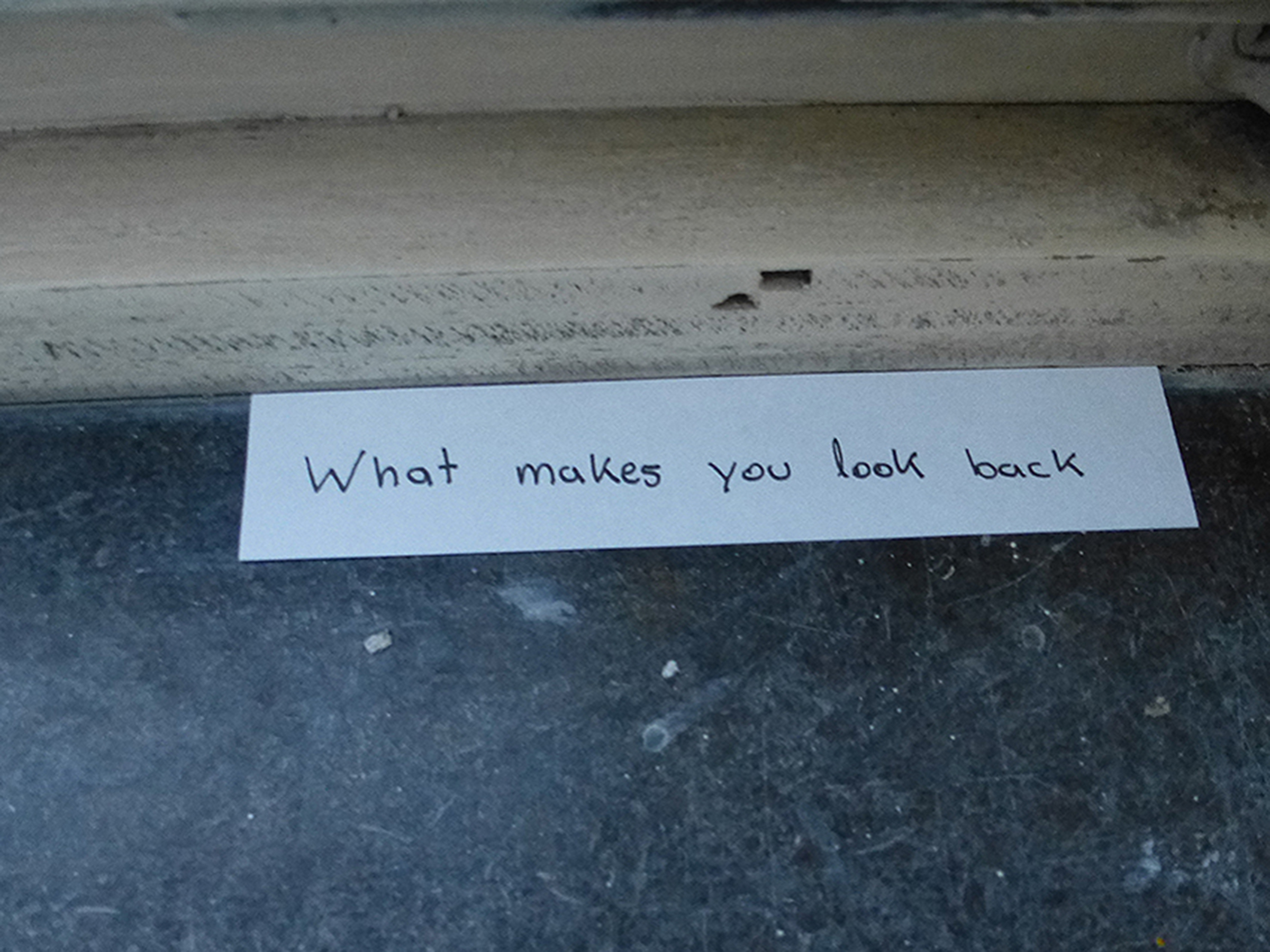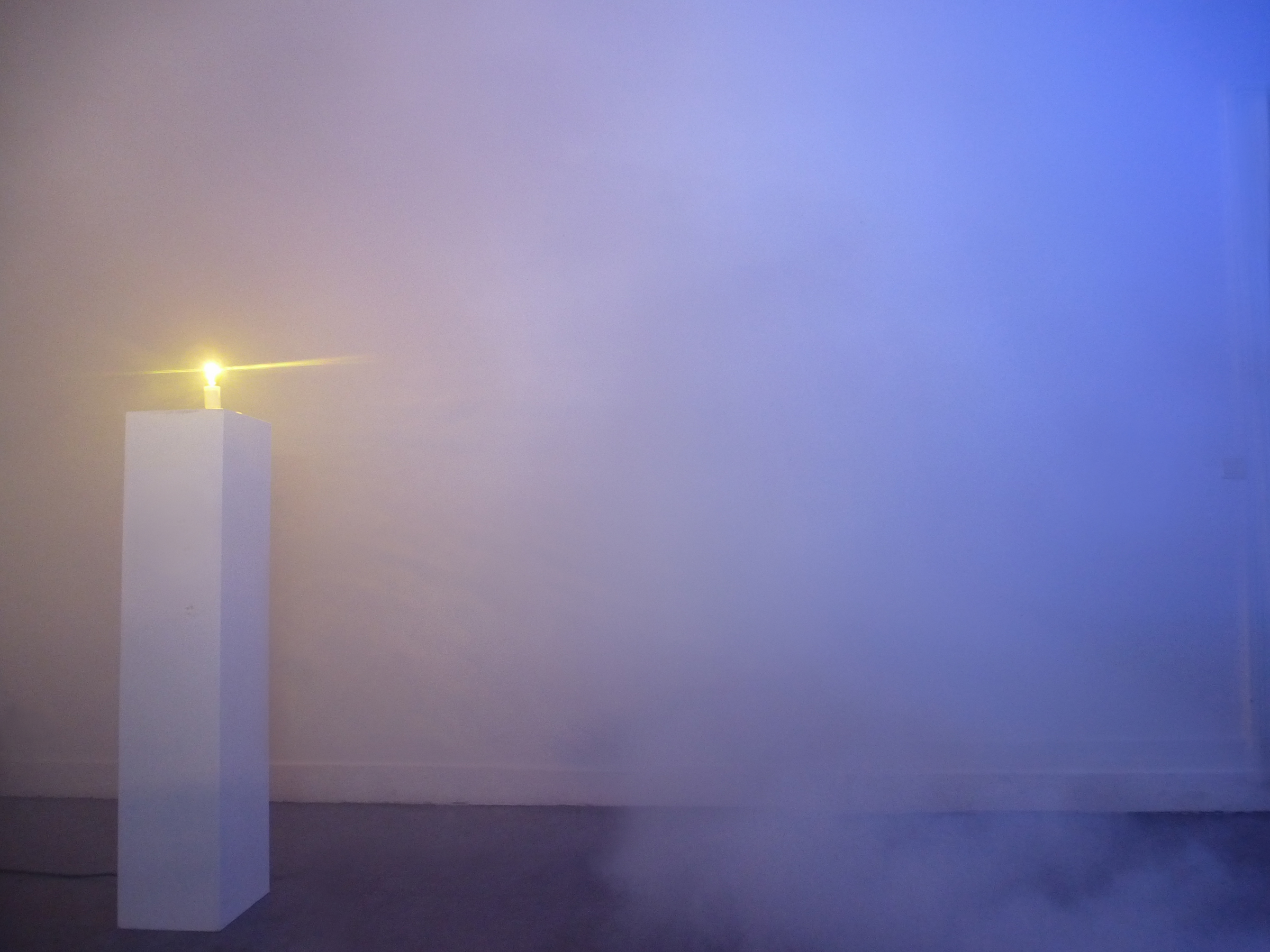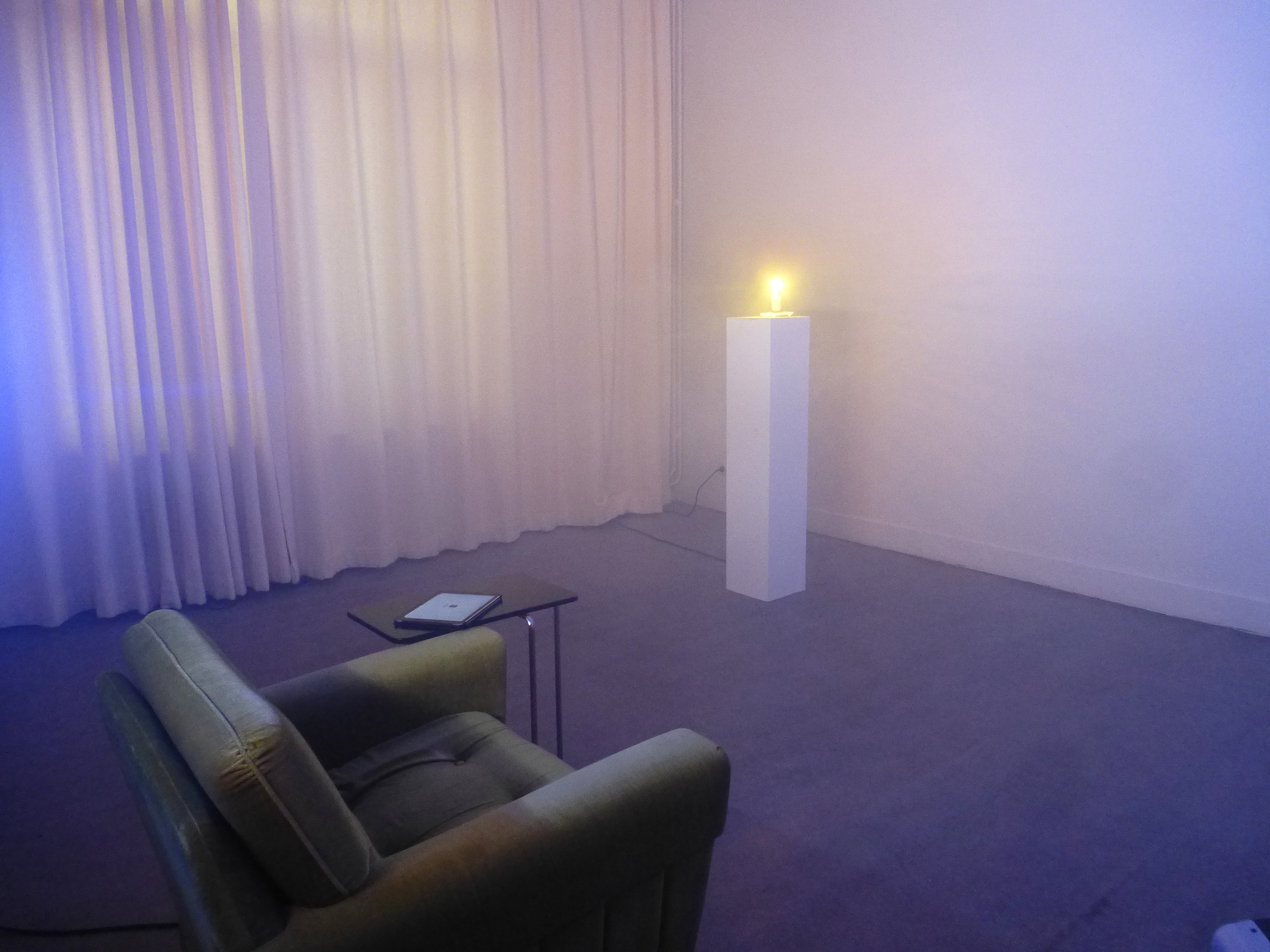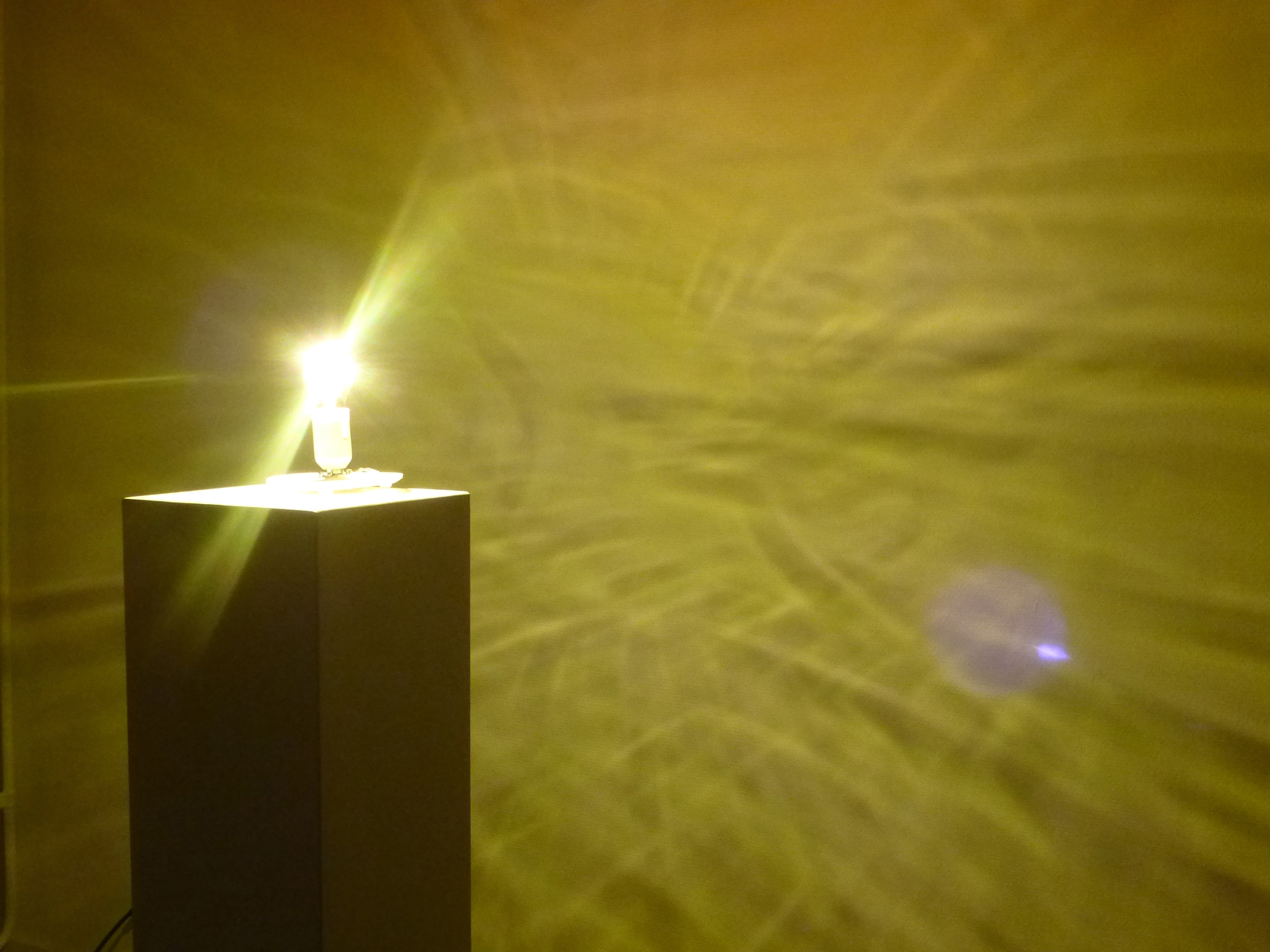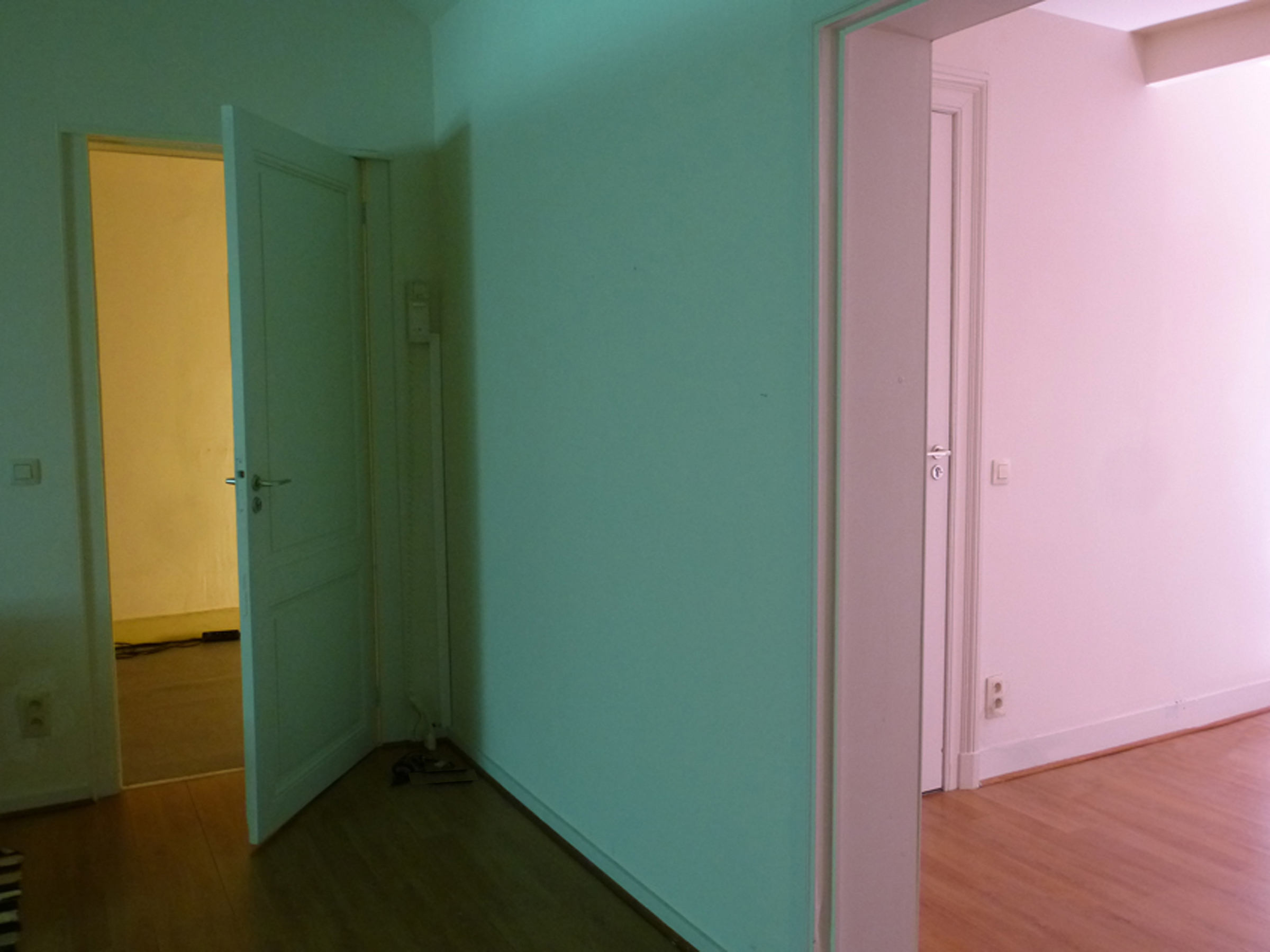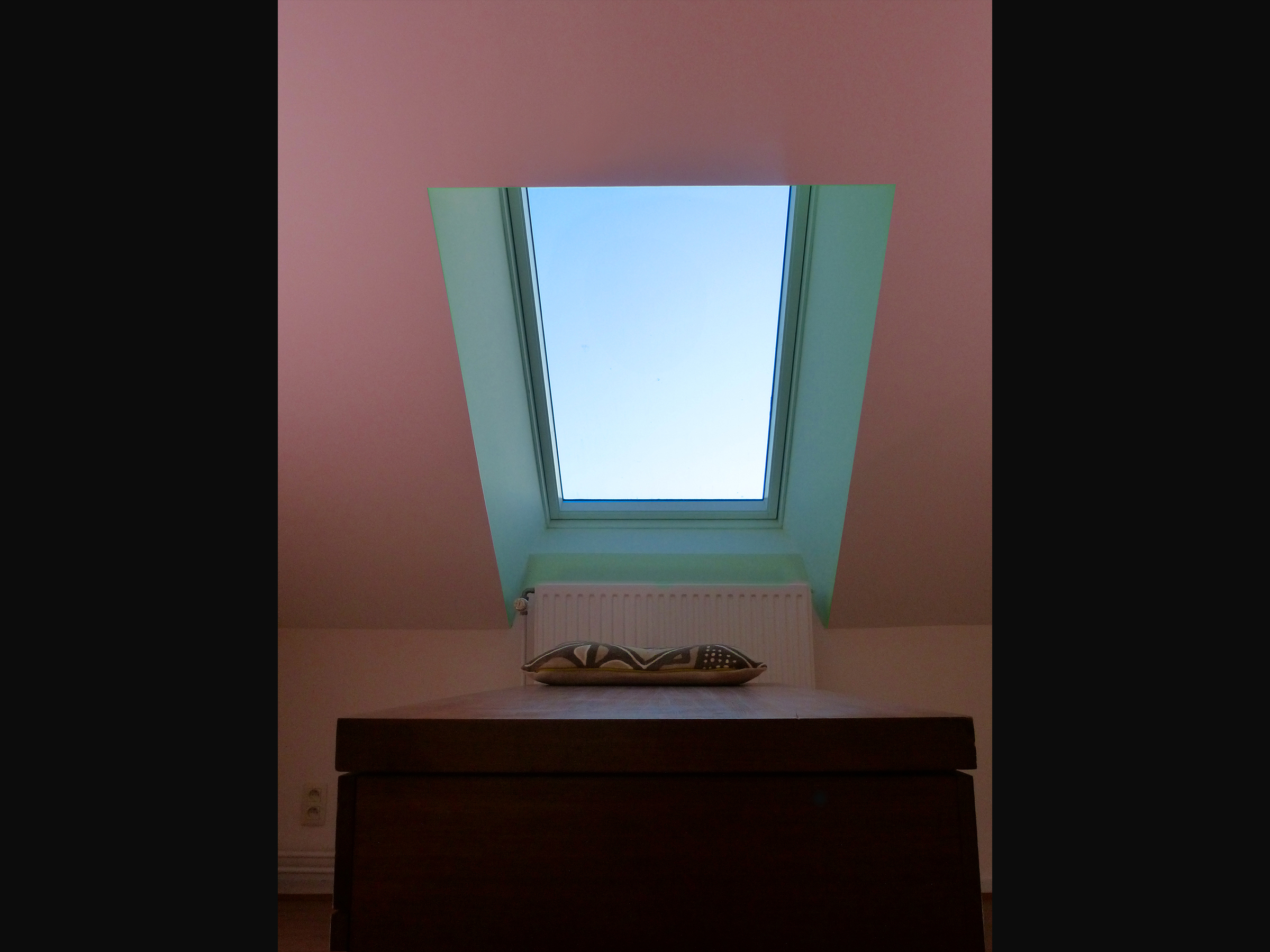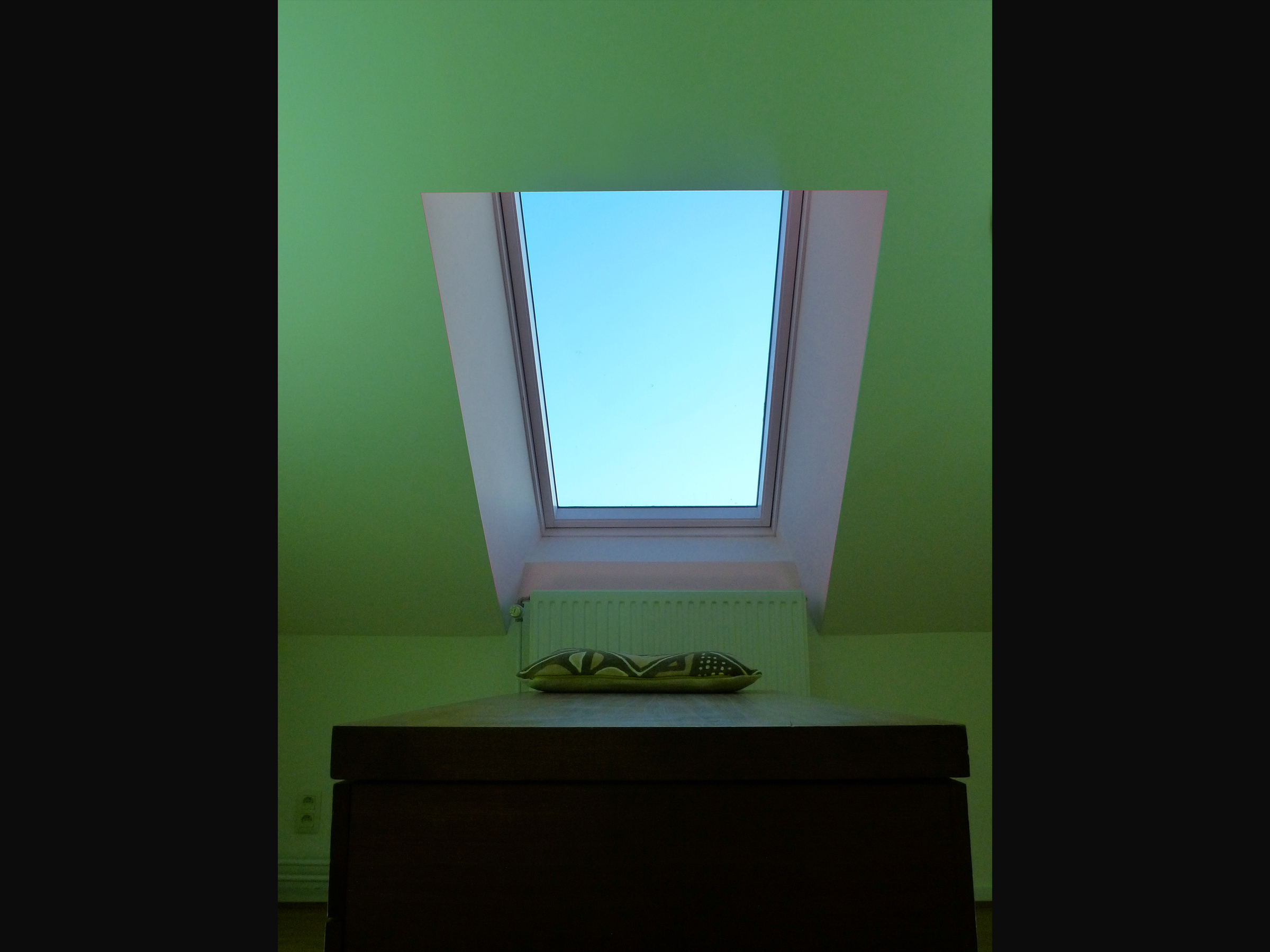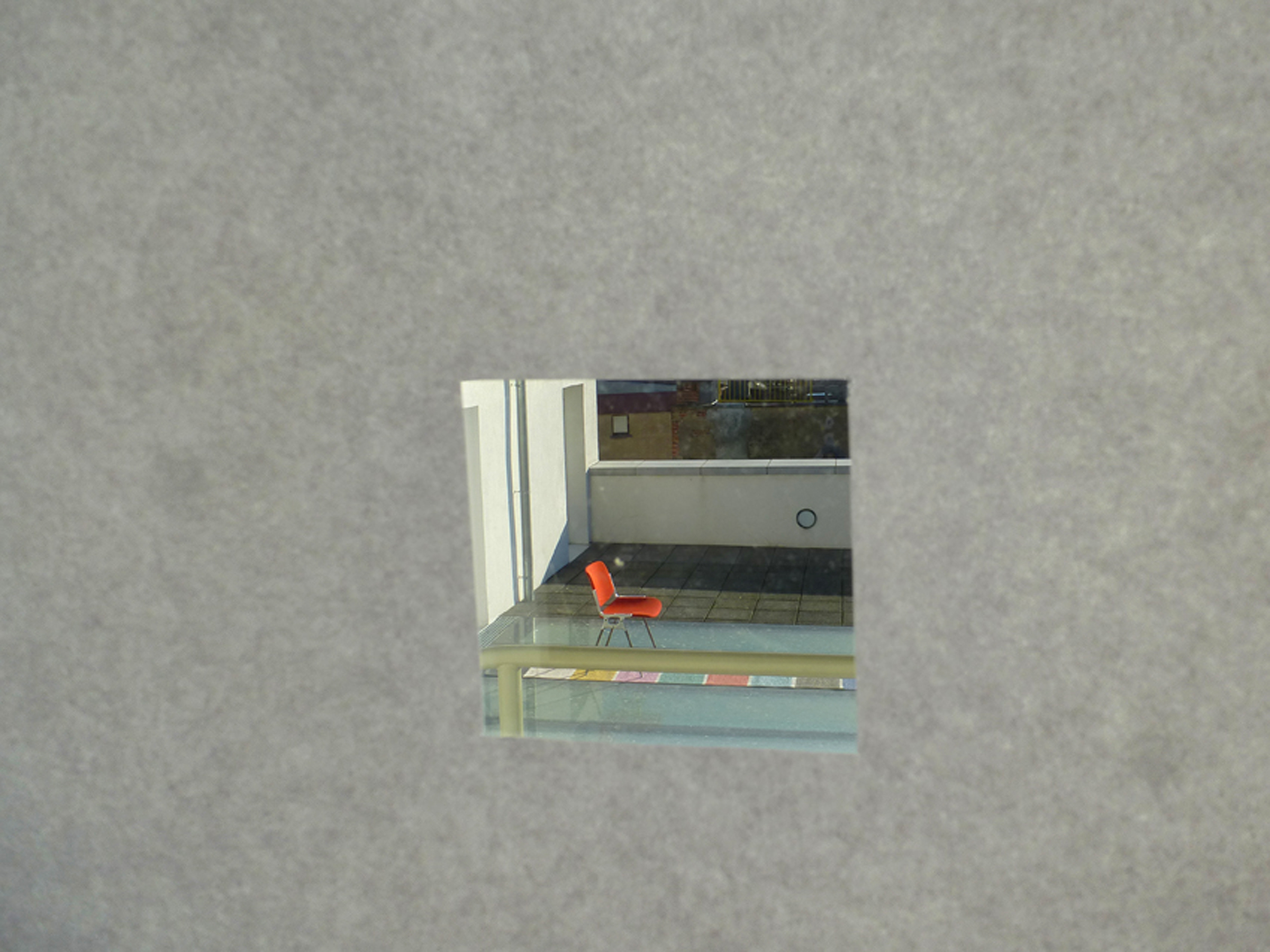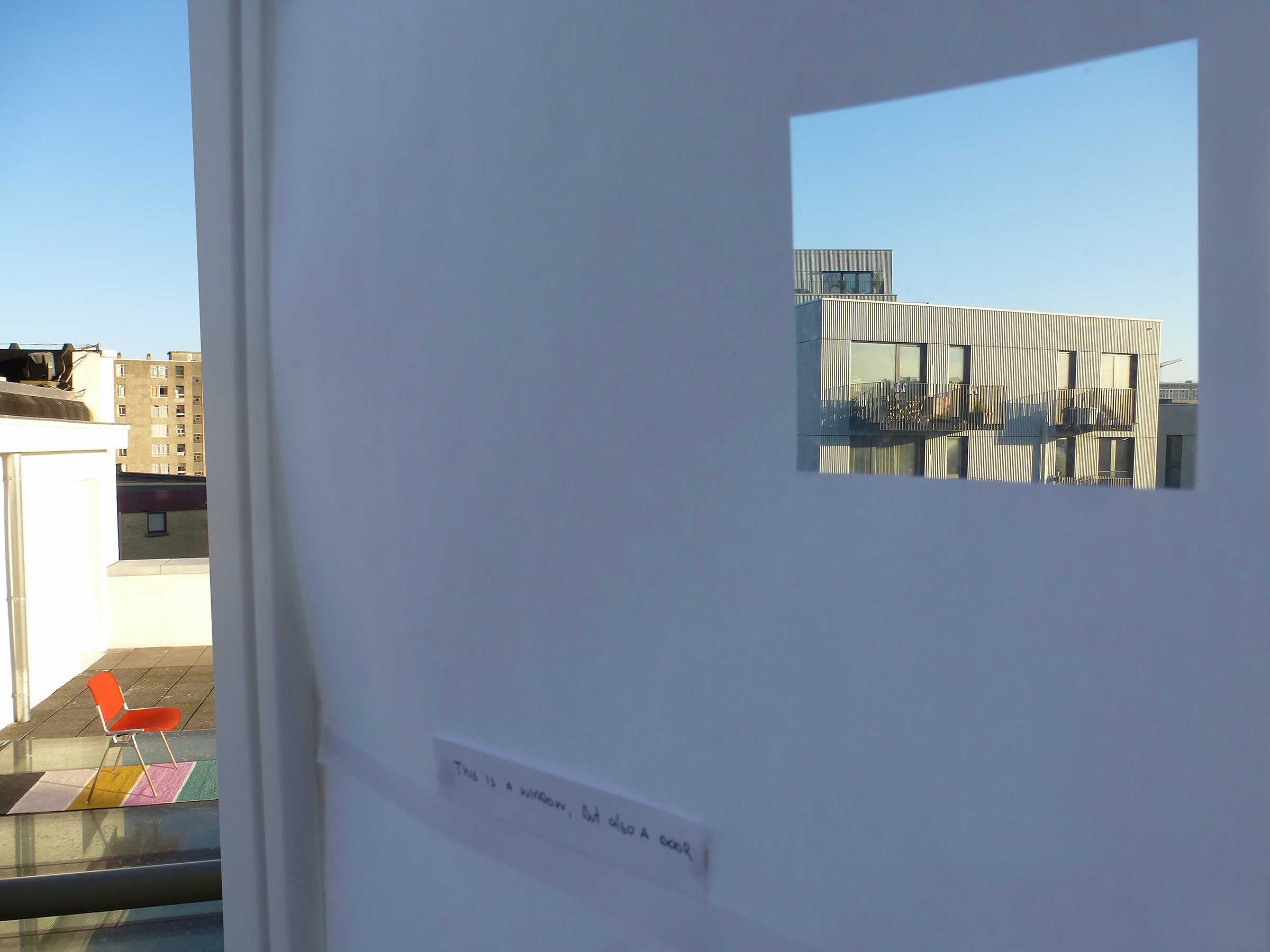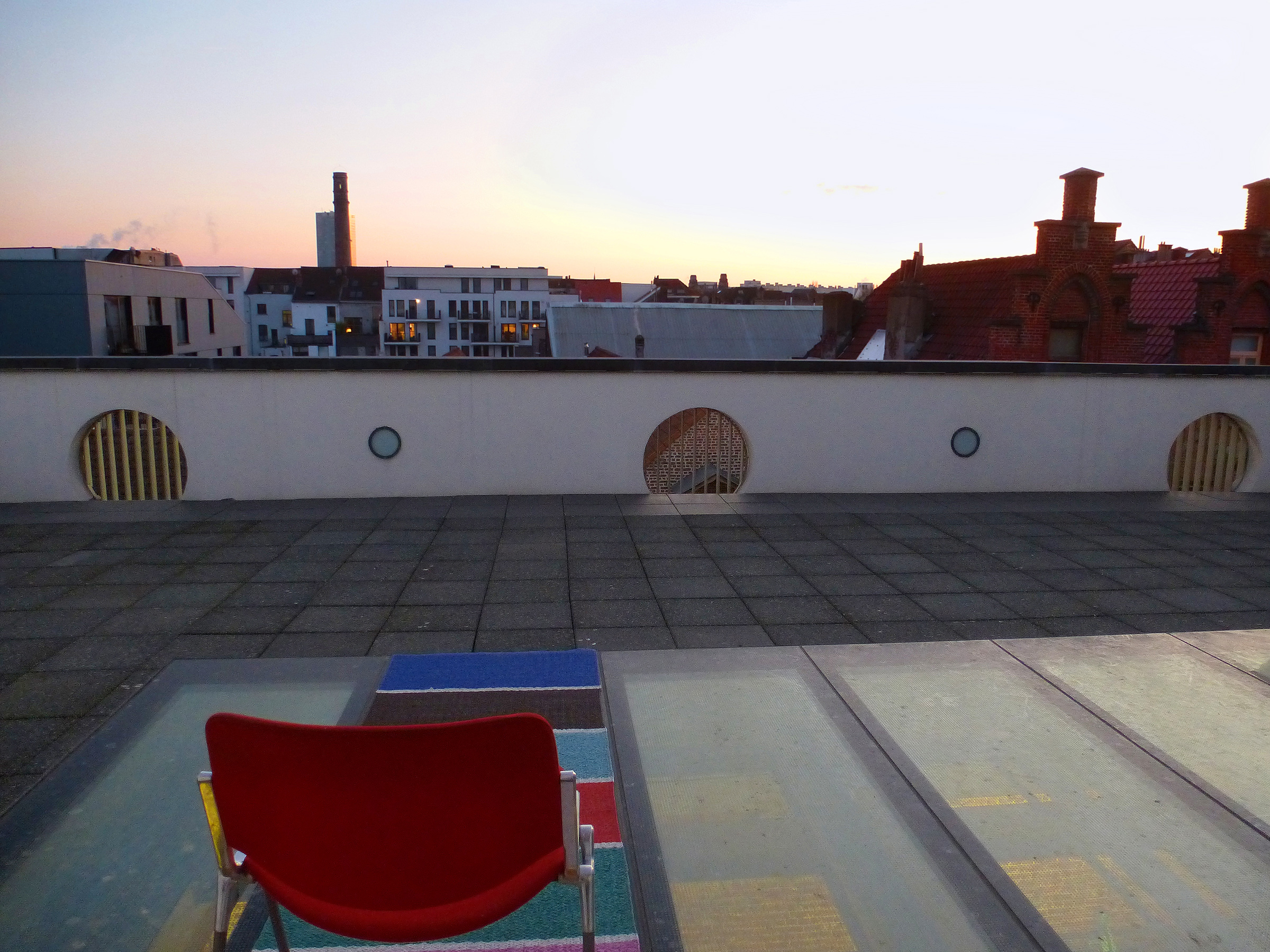If content is not only held but also shaped by the frame, can we change the content by changing the frame? If we can change the colour of the sky by changing the colour of the frame through which it is seen, what other seemingly unchangeable views could be shifted?
Blue is an agreement is an ongoing research and creation project, taking the form of a walk through a building. The work was developed during two residency periods at Workspacebrussels. The walk follows a series of small interventions in a space that frame specific 'other' ways of viewing it. What happens when we look beyond the 'agreed' parameters of a space? What do you (not) see around you? What is the same but different? What other possible realities could emerge, or are already present that we just don't see? We create a series of frames - small interventions in a space that create a specific perspective from which to view/hear/smell/experience the space. These frames give attention to that which is already there, and create a specific perspective from which to encounter this. They could be as simple as rearranging or re-purposing the furniture, colouring or shaping the view through the window, bringing the live sound of the outside surroundings to the inside- or vice versa. Other frames are created by staging the building, or by using the tools of theatre to creating a highly atmospheric space in an unusual context- like a sunrise in an office.
The work is developed through a process of deep observation. We explore the atmospheres and innate affective qualities of the space. We research the systems used to control access and communication- both internal and external and the porosity between the inside of the building and the street and city. We look at the systems of power, production and waste. By looking at the parameters they use to organise the building, we can open up a conversation about other systems of power, access, communication and production at work in the space. We research the histories of the building, and its previous functions. And speculate about future functions it could have.
The work not only creates attention for specific ways of seeing a space, but also amplifies the affective qualities of the space- a bright, sunny room, a confining place… We makes use of the way spaces can make us feel, an inherent quality that is beyond language-our embodied connections to space. The work produces spatial relationships between the viewer and the space - inside, outside, isolated, included…. We use these qualities as a basis for constructing the dramaturgy of the journey through the space. We create spatial relationships in order to examine the interrelationships of social and built structures and speak to the broader relationships created between this space and the values of the systems of organisation that it is situated in.
While scenography can be understood in its simplest as writing in space, this work creates a poetic dialogue by writing with space.
Concept and scenography: vinny jones, in collaboration with Israel López (Light design and scenography)
and Léon Spek (Sound design)
This research was made possible with the support of Workspacebrussels.
